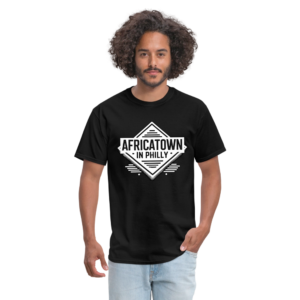Free shipping over $50 for the month of April using code aprilship
The spice trade is one of history’s most significant commercial ventures, connecting continents, fostering exploration, and establishing trade routes that shaped the modern world. This lucrative business began thousands of years ago and revolved around a variety of exotic spices, each carrying immense value. Let’s explore the exact spices that fueled this trade, how it evolved into a worldwide business, and why it became so impactful.
The Spices That Shaped History
The spices that drove the ancient trade routes were not just culinary enhancers; they were considered treasures for their medicinal, preservative, and aromatic properties. Here are the key spices that dominated the trade:
- Black Pepper (Piper nigrum)
- Native to the Malabar Coast of India, black pepper was known as “black gold.” It was highly sought after for its flavor and ability to preserve food. Romans, Greeks, and later Europeans traded extensively for this spice, using it as currency at times.
- Cinnamon (Cinnamomum verum and C. cassia)
- Found in Sri Lanka (Ceylon cinnamon) and parts of Southeast Asia (cassia), cinnamon was prized for its sweet and woody aroma. Ancient Egyptians used it for embalming, while the Romans and Chinese valued it for its medicinal properties.
- Cloves (Syzygium aromaticum)
- Indigenous to the Maluku Islands (Spice Islands) in Indonesia, cloves were cherished for their strong, pungent flavor and medicinal uses. Arab traders introduced cloves to Europe, where they quickly became a symbol of luxury.
- Nutmeg and Mace (Myristica fragrans)
- Both nutmeg (the seed) and mace (the aril covering the seed) come from the nutmeg tree, native to the Banda Islands in Indonesia. These spices were valued for their warm, nutty flavor and were believed to have aphrodisiac and curative properties.
- Ginger (Zingiber officinale)
- Cultivated in India and Southeast Asia, ginger was widely traded for its zesty flavor and ability to treat ailments such as nausea and inflammation. It was also a staple in early Chinese and Roman cuisine.
- Turmeric (Curcuma longa)
- Known for its vibrant yellow color and earthy flavor, turmeric originated in South Asia and was widely used in Indian Ayurveda and traditional Chinese medicine.
- Saffron (Crocus sativus)
- Saffron, derived from the stigmas of crocus flowers, was one of the most expensive spices due to its labor-intensive cultivation. Though its origins trace back to Greece, it became a highly sought-after spice in Middle Eastern and European markets.
- Cardamom (Elettaria cardamomum)
- Native to the Western Ghats of India, cardamom was known as the “queen of spices.” Its aromatic seeds were used in cuisine, perfumes, and traditional medicines across the globe.
- Cumin (Cuminum cyminum)
- Grown in the Mediterranean and South Asia, cumin seeds were a staple spice in Middle Eastern and Indian dishes, as well as an ingredient in ancient remedies.
The Origins of the Spice Trade
The spice trade began as localized exchanges between neighboring regions, eventually growing into a global phenomenon. Here’s how it unfolded:
- Early Trade Networks
- Archaeological evidence suggests that the spice trade began as early as 2000 BCE. South Asian and Middle Eastern merchants traded cinnamon, pepper, and ginger along the overland Silk Road and maritime routes. Spices traveled from India and Southeast Asia to Mesopotamia, Egypt, and beyond.
- The Role of the Arabs
- By the first millennium BCE, Arab merchants dominated the spice trade. They acted as middlemen, bringing spices from the Indian Ocean to the Mediterranean. Arab traders often spun mythical tales about the origins of spices like cinnamon and cassia to maintain their monopoly.
- Roman Empire’s Demand
- The Romans were avid consumers of spices, particularly pepper, which they imported in large quantities through Alexandria in Egypt. The fall of the Roman Empire saw the decline of direct trade, but the demand for spices persisted.
- The Venetian Monopoly
- During the Middle Ages, Venice emerged as a key player in the spice trade. Venetian merchants obtained spices from Arab traders and distributed them across Europe. This monopoly drove up the prices, making spices a luxury reserved for the wealthy.
Why Spices Were So Valuable
- Culinary Use
- Spices transformed bland medieval diets, adding flavor and variety to food.
- Medicinal Properties
- Spices like ginger, turmeric, and cinnamon were considered remedies for various ailments, making them indispensable in traditional medicine.
- Preservation
- Before refrigeration, spices played a vital role in preserving food, especially meats, making them essential for long voyages.
- Symbol of Wealth
- Spices became status symbols, often gifted among royalty and nobility to signify wealth and power.
The Age of Exploration
The European desire to bypass Arab and Venetian intermediaries and gain direct access to spices led to the Age of Exploration in the 15th and 16th centuries.
- Portuguese Expansion
- The Portuguese, led by Vasco da Gama, discovered a sea route to India in 1498. This breakthrough allowed them to establish direct trade with spice-producing regions, particularly the Malabar Coast.
- The Dutch and the East India Companies
- By the 17th century, the Dutch East India Company (VOC) gained control of the spice trade. They established monopolies over nutmeg, cloves, and mace by colonizing the Spice Islands. The English East India Company also played a significant role, focusing on pepper and tea.
- Colonialism and Exploitation
- European powers colonized spice-producing regions, exploiting local farmers and forcing monopolies. The spice trade’s profits funded European imperial ambitions, further entrenching colonial control.
The Spice Trade’s Global Impact
- Cultural Exchange
- Spices facilitated cultural interactions as traders, sailors, and explorers exchanged ideas, recipes, and traditions.
- Economic Transformation
- The spice trade laid the foundation for modern global commerce, establishing trade routes that are still relevant today.
- Technological Advancements
- The quest for spices spurred innovations in navigation, shipbuilding, and cartography, fueling further exploration.
- The Emergence of New Markets
- Spices influenced culinary traditions worldwide, with regions adapting exotic spices into their cuisines, creating iconic dishes such as Indian curries, Middle Eastern spice blends, and European spiced desserts.
The Decline of the Spice Trade
By the 18th and 19th centuries, the spice trade declined as spices became more accessible due to colonial plantations in Africa, the Caribbean, and Southeast Asia. The industrial revolution further diminished their exclusivity, making them affordable for the masses.
Conclusion
The spice trade was more than a commercial enterprise; it was a transformative force in human history. Spices like black pepper, cinnamon, cloves, and nutmeg fueled exploration, fostered cultural exchanges, and built economies. They spurred the Age of Exploration, led to the rise and fall of empires, and transformed global diets.
Today, the legacy of the spice trade lives on in every dish seasoned with pepper or cinnamon and in the interconnected global economy it helped create. Understanding its history is a reminder of how small things—like aromatic seeds and barks—can change the course of humanity.
------------------------------------------------
We use AI GPT Chatbots to help with our content and may get some things wrong.
-------------------------------------------------









